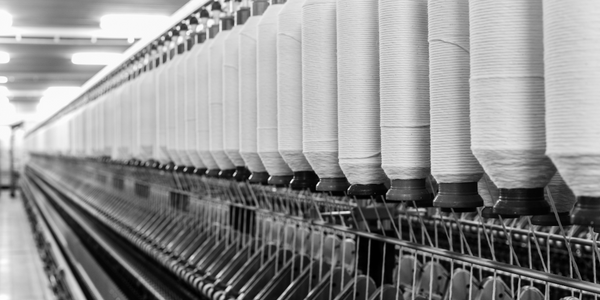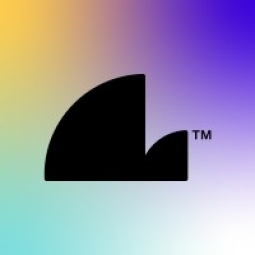Technology Category
- Functional Applications - Manufacturing Execution Systems (MES)
Applicable Industries
- Apparel
- Retail
Applicable Functions
- Facility Management
- Product Research & Development
Use Cases
- Additive Manufacturing
- Manufacturing Process Simulation
Services
- Hardware Design & Engineering Services
- Testing & Certification
About The Customer
Sierra Designs got its start in San Fransisco in 1965 as a manufacturer of outdoor equipment and personal apparel. Sierra Designs Canada was founded in 1982 as an exclusive Canadian licensee of the brand. Currently based in Brampton Ontario, the company also operates a manufacturing facility in Foymount, Ontario. The company deals with some of the most powerful retail partners in the world and depends on partnerships with contract manufacturers overseas in Asia for its apparel division.
The Challenge
Sierra Designs, a manufacturer of outdoor equipment and personal apparel, faced challenges in streamlining its apparel-design process from initial conception through manufacturing. The evolution of the outdoor-apparel industry and the corporate success of Sierra Designs have both produced challenges for the company. Fashion-savvy consumers and an increasingly competitive marketplace demand increasingly greater flexibility and creativity from the Sierra Designs team. The company also deals with powerful retail partners that expect nothing short of the absolute best in terms of quality and on-time delivery. In addition to its domestic manufacturing facility, Sierra Designs' apparel division depends on partnerships with contract manufacturers overseas in Asia. Design, for the Sierra team, has therefore become a complex process in which clear communication at every stage is critical to success.
The Solution
Sierra Designs has been using CorelDRAW Graphics Suite to streamline its design process. CorelDRAW's versatility and flexibility provide greater design freedom and improve the ability to communicate with manufacturers for faster, more accurate production. CorelDRAW's handling of color has evolved along with Sierra Designs' design requirements. The interoperability of CorelDRAW allows the team to add plug-ins such as Pantone color queues to increase their options. CorelDRAW also has the flexibility to make adjustments easily. The greatest advantage Sierra Designs has gained by using CorelDRAW, however, has to do with the specification packages it creates to support the manufacturing process. Sierra Designs uses CorelDRAW to map out its plans at the beginning of each new design season, preserving the entire trail of iterations and maintaining a complete record of the evolution of each design.
Operational Impact
Quantitative Benefit

Case Study missing?
Start adding your own!
Register with your work email and create a new case study profile for your business.
Related Case Studies.

Case Study
Fire Alarm System and Remote Monitoring Sytem
Fire alarm systems are essential in providing an early warning in the event of fire. They help to save lives and protect property whilst also fulfilling the needs of insurance companies and government departments.Fire alarm systems typically consist of several inter-linked components, such as smoke detectors, heat detector, carbon monoxide, manual call points, sounders, alarm and buzzer. The fire alarm system should give immediate information in order to prevent the fire spread and protect live and property.To get maximum protection a shoe manufacturer in Indonesia opted for a new fire alarm system to monitor 13 production sites spread over 160 hectars. Although the company had an existing fire alarm system, it could not be monitored remotely.It was essential that the new system would be able to be monitored from a central control room. It needed to be able to connect to the existing smoke detector and manual call point. Information should be easily collected and passed on to the Supervisory Control and Data Acquisition (SCADA) system. Furthermore, the system should have several features such as alarm management, auto reporting, being connected to many client computers without additional cost, and run 24/7 without fails. The company also needed a system which could be implemented without changing the architecture of the existing fire alarm system.

Case Study
IoT Applications and Upgrades in Textile Plant
At any given time, the textile company’s manufacturing facility has up to 2,000 textile carts in use. These carts are pushed from room to room, carrying materials or semi-finished products. Previously, a paper with a hand-written description was attached to each cart. This traditional method of processing made product tracking extremely difficult. Additionally, making sure that every cart of materials or semi-finished products went to its correct processing work station was also a problem. Therefore, the company desired an intelligent solution for tracking assets at their factories. They also wanted a solution that would help them collect process data so they could improve their manufacturing efficiency.

Case Study
Improving Production Line Efficiency with Ethernet Micro RTU Controller
Moxa was asked to provide a connectivity solution for one of the world's leading cosmetics companies. This multinational corporation, with retail presence in 130 countries, 23 global braches, and over 66,000 employees, sought to improve the efficiency of their production process by migrating from manual monitoring to an automatic productivity monitoring system. The production line was being monitored by ABB Real-TPI, a factory information system that offers data collection and analysis to improve plant efficiency. Due to software limitations, the customer needed an OPC server and a corresponding I/O solution to collect data from additional sensor devices for the Real-TPI system. The goal is to enable the factory information system to more thoroughly collect data from every corner of the production line. This will improve its ability to measure Overall Equipment Effectiveness (OEE) and translate into increased production efficiencies. System Requirements • Instant status updates while still consuming minimal bandwidth to relieve strain on limited factory networks • Interoperable with ABB Real-TPI • Small form factor appropriate for deployment where space is scarce • Remote software management and configuration to simplify operations

Case Study
Digital Retail Security Solutions
Sennco wanted to help its retail customers increase sales and profits by developing an innovative alarm system as opposed to conventional connected alarms that are permanently tethered to display products. These traditional security systems were cumbersome and intrusive to the customer shopping experience. Additionally, they provided no useful data or analytics.

Case Study
How Sirqul’s IoT Platform is Crafting Carrefour’s New In-Store Experiences
Carrefour Taiwan’s goal is to be completely digital by end of 2018. Out-dated manual methods for analysis and assumptions limited Carrefour’s ability to change the customer experience and were void of real-time decision-making capabilities. Rather than relying solely on sales data, assumptions, and disparate systems, Carrefour Taiwan’s CEO led an initiative to find a connected IoT solution that could give the team the ability to make real-time changes and more informed decisions. Prior to implementing, Carrefour struggled to address their conversion rates and did not have the proper insights into the customer decision-making process nor how to make an immediate impact without losing customer confidence.








